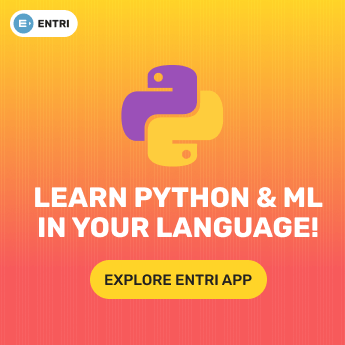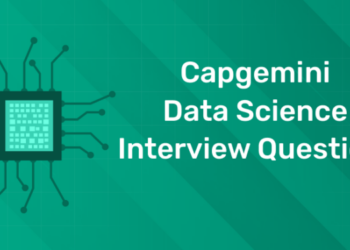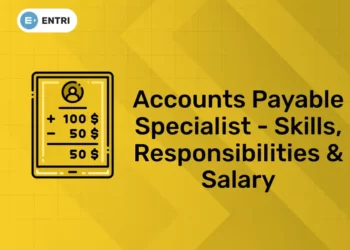Table of Contents
When it comes to the programming language Python, there are currently two versions in use: Python 2 and Python 3. These two versions have notable differences that can affect the way you code and run your programs, so it’s important to learn about them before starting any serious projects in Python. We’ll cover the main differences between Python 2 and Python 3 and help you decide which version might be best for you. Python is an object-oriented programming language that’s known for its readability and ease of use. It was created by Guido van Rossum in 1991 and has since become one of the most popular languages in the world, thanks to its syntax and powerful libraries and frameworks (like Django, Flask, and Kivy).
Python 2 has been around since 2000, while Python 3 was released in 2008 as an improvement on version 2. Both are very popular programming languages that are used in the video game industry, so it’s important to understand what they each have to offer. This article takes a look at some of the ways in which Python 2 and Python 3 differ and how you can take advantage of them both in your game programming career. It will also compare some of the pros and cons of each language, so you can learn how to make an informed decision about which one to focus on if you’re just getting started with coding. Python 2 and Python 3 are the two major versions of the Python programming language. While Python 2 was developed in the 1990s, it’s still widely used today, as it’s easier to work with than its successor, Python 3. Which version you should learn depends on your specific circumstances, but this article will give you some information to help you make your decision.
Why Learn Python?
Learning a programming language is like learning any new skill, from woodworking to baking—you don’t just jump into a complicated recipe and hope for the best. Likewise, you shouldn’t dive into an advanced programming language without knowing what you’re getting yourself into first. If you know someone who can teach it to you or if you can find an online course, then by all means get started right away! But if not, it’s best to take your time and go step-by-step through a beginner-level tutorial that builds on each lesson before moving on to more advanced topics. In many cases (as in baking), jumping ahead will only lead to frustration and waste of time when you have to go back and relearn everything later anyway. Programming languages are no different; learning one takes dedication and patience. When deciding which programming language to learn, consider whether it will be used primarily for web development or mobile development. Python is known as a general-purpose language, meaning it can be used for web development but also as part of backend services. Java is another popular general purpose language; however, both languages have very different syntaxes and approaches to problem solving. Because of its popularity with Google developers, Android app developers should strongly consider Java over Python for their mobile apps unless they are looking at developing software for smart TVs or other embedded devices where Python may be more applicable than Java due to its flexibility and simplicity in working with smaller devices with limited resources.
“Ready to take your python skills to the next level? Sign up for a free demo today!”
Advantages of Python 3
The creator of Python, Guido van Rossum, says that the advantages of upgrading to Python 3 include (but are not limited to): major performance enhancements in many popular modules; better Unicode support; easier debugging capabilities using a new traceback feature; and end-of-life for older versions of both Mac OS X (support has ended for 10.4 and below) and Microsoft Windows (XP is no longer supported). However, as you’ll discover later in this post, you may have to deal with slower execution times or functionality limitations if you choose to stick with version 2 over version 3 (which might not be worth it). There’s also a significant difference between porting existing code from Python 2 to Python 3 versus starting fresh with Python 3—and there’s quite a bit more complexity involved in porting your existing code than simply updating it.
Although there are some compelling reasons why programmers should learn version 3, there’s still plenty of demand for developers who know how to work with version 2—so you’re not likely to miss out on job opportunities by sticking with what you know. But ultimately, choosing which one is right for you will depend on your specific needs and preferences. If speed matters most to you but don’t mind sacrificing certain features (like compatibility), then sticking with version 2 could make sense.
Differences Between Both Versions
Python 2 was created in 2000, and it’s been over a decade since then. So why should you care about it now? For starters, you’re likely to find yourself needing to interact with applications written for Python 2. Secondly, it will become official once 2020 hits, and projects that no longer work on your computer will stop working completely (this doesn’t mean they’ll stop working on any other computer). That said, there are good reasons to consider diving into version 3 right away as well—it’s certainly an exciting time to learn programming! This guide aims to help you weigh your options before deciding which way is best for you—including how much it costs, what each version entails, and where you can get started learning each language effectively today. Happy coding!
The first point worth covering is what makes them different from one another. If you’re just starting out with Python, be sure to check out our 101 Best Resources for Learning How to Code guide for more awesome beginner-friendly resources like these lists of helpful links. Essentially, if all you want to do is run code right now without being concerned with which version of Python suits your needs best, use either Pyton 2 or Pyton 3 as they both have everything built in that makes up what a programming language needs – including syntax and functionality. They also have most libraries built into them so it’s easy to get up and running quickly.
How to Install Both Versions on Windows, Linux, and Mac OS X
If you’re using a Mac or Linux machine, installing Python is as easy as running sudo pip install python3 or sudo apt-get install python3 on Ubuntu and Debian. If you want to run both versions of Python, then you’ll need to use pyenv for something called virtualenv (which is just a way of installing multiple versions of something at once). To get that set up, run these commands (if you are on a Mac and have homebrew installed). Otherwise, just grab the files from here . Another option is to go with Anaconda , which works well if you do scientific computing work—otherwise it might be overkill for your needs. Once you’ve got everything set up, switching between versions is really simple. Just type which python3 into Terminal and then replace python3 with python2 in order to switch back.
“Experience the power of our web development course with a free demo – enroll now!”
Choosing Between the Two
Before we dive into which is better, let’s go over what each version of Python entails and how they differ from one another. Basically, there are two versions of python you can learn: version 2 and version 3 (also known as py3k). The good news for beginners is that Python 2 has been around for longer than Py3k—but there have been some major improvements to Py3k in recent years that may convince developers to make the switch. In other words, it doesn’t matter too much which you start with—so long as you pick one and commit to it! Here’s a quick rundown of key differences between Python 2 and 3 *Py2 uses ASCII-based strings while Py3 uses Unicode strings; *The print statement is removed in Py3; *Certain built-in functions are replaced or removed entirely; *The module syntax changes; *In Py2, exceptions use raise Exception(msg) whereas in Py3 they use raise Exception(). Also note that try/except/finally blocks will not work properly if your code tries to import both at once; *File paths change slightly depending on whether you’re using py2 or py3. For example, sys.path[0] becomes sys.path_hooks[0]; and so on…
Python 2 vs. Python 3 – Which is Better?
Python 2 and Python 3 are the two most common versions of the Python programming language. If you’re considering learning how to code in Python, you might be wondering which version of the language to start with – and it’s true that there are certain advantages to learning one version over the other. So if you’re trying to decide between Python 2 and Python 3, here’s everything you need to know about the differences between these two popular coding languages, along with some advice on how to start learning Python 3 in 2019 if that’s what you ultimately decide to do!
Grab the opportunity to learn Python with Entri! Click Here
What Does Each Version Mean?
It’s no secret that many developers aren’t too keen on having to learn more than one programming language. In some cases, a language may be updated in such a way that makes it incompatible with existing code. This kind of scenario occurred in June 2008 when Python was upgraded from version 2 to version 3 . One common concern of programmers was how much time and money would be required to rewrite or convert existing code so it could work with both versions (this concern does not seem to have been entirely unwarranted). Such concerns about version differences prompted many companies to stick with version 2 as opposed to transitioning over as soon as possible, which gave rise to a period where there were two versions of Python being used side by side for several years.
When Do You Need To Start Coding In Each Version?
If you’re just starting out with coding, then you don’t need to know how to code in both versions right away (nor do you need to choose one over another). The best advice I can give is to try a few basic tutorials and see which language makes more sense for you. If there are several options to learn a particular programming language, then get a feel for each one and see which one works best for your learning style. Alternatively, let someone else decide what version they want you to use—just make sure they understand why they chose that version over others!
What are the Differences Between The Two Versions?
While most of us are using version 2, there are many differences between them, and a lot of developers want to learn version 3 because it’s quickly gaining in popularity. The key difference lies in how you name your variables. Let’s say you want to assign a number value (2) to your variable named num1 in both versions of Python. In version 2, you would type: num1 = 2. However, in version 3, you would type num1 = int(2). This may seem like a small change on paper, but when programming it makes all the difference! There are other minor changes like these that make learning version 3 worth your time if you plan on becoming an expert programmer or working with others who use only that language. If you want to know more about why version 3 is so popular, check out our post Why Learn Python 3? for some great reasons.
“Get hands-on with our python course – sign up for a free demo!”
Advantages of Python 2 over Python 3
What could Python 2 do that Python 3 can’t (at least not yet)? What are some of your favorite features of Python 2 that aren’t available in Python 3? Although future versions of both will likely have these features, as well as other useful ones, it’s helpful to know what we’re giving up by switching from P2 to P3. Also, if you use an IDE like PyCharm or Komodo, you may notice something strange when running code in different versions. That’s because newer versions of IDEs typically support newer versions of a language; if not, they usually offer add-ons (or plugins) to run older code through a compiler before execution. This can help make sure your program runs properly, but it also means that you might be missing out on any new features provided by a newer version of a language. If you don’t want to miss out on any new goodies and still want to use an IDE for editing and debugging purposes, you’ll need to install two compilers: one for each version of Python. You can find installation instructions here.
Disadvantages of Python 2 over Python 3
The most common complaint you’ll hear about Python 3 isn’t that it’s missing a feature or has bugs, but rather that it was incompatible with older versions of Python, making any project with Python code written before 2008 inoperable on modern machines. On top of that, there are many other missing features from previous versions of python which are no longer supported in Python 3 (F-strings and keyword-only arguments for example). All of these missing features were once useful for your programs but now are not part of future releases so you should stay away from them to save yourself future headaches. Also, many developers complain about how long it took to release a stable version and how new versions come out every few months.
Should you go for Python 2 or Python 3?
Before we get into which you should use, let’s discuss how they are different. The main difference between versions 2 and 3 is that version 3 brings many changes and updates to Python, including Literal Unicode strings (string literals like Hello or ‘ThisIsATest’) Code formatting standards Removal of deprecated functionality Functionality improvements The transition from version 2 to version 3 didn’t happen all at once, though; it took over a decade for all of these changes to be made because a large community developed around each version during that time.
Summary
In case you’re not familiar with computer programming languages, a quick primer: Programming languages are used to tell computers what to do (aka instruct them). Computers are extremely good at doing exactly what they’re told—they don’t understand or process natural language (aka human speak). There are several programming languages used today, but arguably two of the most popular/well-known ones in use by developers today are Java and Python. Let’s explore each of these individually. If you are interested to learn new coding skills, the Entri app will help you to acquire them very easily. Entri app is following a structural study plan so that the students can learn very easily. If you don’t have a coding background, it won’t be any problem. You can download the Entri app from the google play store and enroll in your favorite course.











